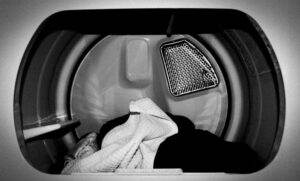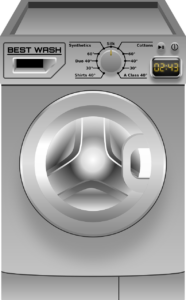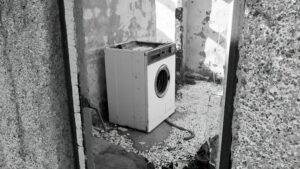Electrical safety is a crucial aspect of our daily lives that often goes unnoticed until an accident occurs. From the moment we wake up and turn on the lights to the time we go to bed and charge our devices, electricity is an integral part of our routines. However, it is important to remember that electricity can be dangerous if not handled properly. This blog post aims to provide a comprehensive guide to electrical safety, covering everything from understanding electric shock hazards to preventing accidents in the home and workplace.
Understanding Electric Shock Hazards: What You Need to Know
Electric shock occurs when a person comes into contact with an electrical source and the current passes through their body. The severity of electric shock can range from a mild tingling sensation to severe burns, organ damage, or even death. Electric shock can occur in various ways, such as touching exposed wires, faulty electrical equipment, or coming into contact with water or conductive surfaces while using electrical appliances.
The dangers of electric shock are numerous and should not be taken lightly. Even a small amount of current passing through the body can disrupt the normal functioning of the heart and other vital organs. In addition, electric shock can cause severe burns, muscle contractions, and nerve damage. It is essential to understand these hazards in order to take the necessary precautions to prevent accidents.
Common Causes of Electric Shock Accidents in the Home
Electric shock accidents in the home can occur due to a variety of reasons. Some common causes include faulty wiring, damaged electrical cords or outlets, improper use of electrical appliances, and lack of grounding. It is important to be aware of these potential hazards and take steps to prevent accidents.
To prevent electric shock accidents in the home, it is crucial to ensure that all electrical wiring is up to code and installed by a qualified professional. Regularly inspecting electrical cords and outlets for any signs of damage or wear is also important. Additionally, using electrical appliances according to their intended purpose and following safety guidelines can help prevent accidents.
Identifying Electrical Safety Hazards in Your Home
Identifying electrical safety hazards in your home is an essential step in ensuring the safety of yourself and your family. Some common electrical safety hazards to look out for include exposed wires, overloaded circuits, outdated electrical panels, and improper grounding.
To identify these hazards, it is important to conduct a thorough inspection of your home’s electrical system. Look for any signs of wear or damage on electrical cords and outlets. Check if any outlets or switches feel warm to the touch, as this could indicate an underlying issue. If you notice any flickering lights or frequently blown fuses, it may be a sign of an overloaded circuit. It is important to address these hazards promptly to prevent accidents.
Tips for Safe Electrical Wiring and Installation
Safe electrical wiring and installation are crucial for preventing accidents and ensuring the proper functioning of your electrical system. Here are some tips to follow:
1. Hire a qualified electrician: When it comes to electrical wiring and installation, it is best to leave it to the professionals. Hiring a qualified electrician ensures that the work is done safely and up to code.
2. Use the right materials: Make sure to use the correct type and gauge of wiring for your specific needs. Using the wrong materials can lead to overheating and potential hazards.
3. Avoid overloading circuits: Overloading circuits can lead to overheating and electrical fires. Make sure to distribute the load evenly across different circuits and avoid using too many high-wattage appliances on a single circuit.
4. Install ground fault circuit interrupters (GFCIs): GFCIs are designed to protect against electric shock by quickly shutting off power in the event of a ground fault. Install GFCIs in areas where water is present, such as bathrooms, kitchens, and outdoor outlets.
5. Label circuit breakers: Properly labeling circuit breakers makes it easier to identify and turn off power to specific areas of your home in case of an emergency or when performing maintenance.
Following these tips will help ensure the safety and efficiency of your electrical system.
Choosing the Right Electrical Equipment for Your Home
Choosing the right electrical equipment for your home is essential for both safety and energy efficiency. Here are some factors to consider when selecting electrical equipment:
1. Quality and reliability: Invest in high-quality electrical equipment from reputable manufacturers. This ensures that the equipment meets safety standards and is less likely to malfunction.
2. Energy efficiency: Look for energy-efficient appliances and devices that can help reduce your electricity consumption. Energy-efficient equipment not only saves you money on utility bills but also reduces your carbon footprint.
3. Compatibility: Ensure that the electrical equipment you choose is compatible with your home’s electrical system. Using incompatible equipment can lead to malfunctions and potential hazards.
4. Safety features: Check if the equipment has built-in safety features such as overload protection, surge protection, and automatic shut-off mechanisms. These features provide an extra layer of protection against accidents.
Taking the time to research and choose the right electrical equipment for your home will contribute to a safer and more efficient living environment.
How to Properly Ground Electrical Systems
Properly grounding electrical systems is crucial for preventing electric shock hazards and ensuring the safe operation of your electrical system. Grounding provides a path for electrical current to flow safely into the ground in case of a fault or surge.
To properly ground your electrical system, it is important to:
1. Install grounding rods: Grounding rods are metal rods that are driven into the ground near your home’s electrical panel. They provide a direct path for electrical current to flow into the ground.
2. Connect grounding wires: Grounding wires should be connected to both the grounding rods and the main electrical panel. These wires help divert electrical current away from the electrical system and into the ground.
3. Test the grounding system: Regularly test the grounding system to ensure that it is functioning properly. This can be done using a ground fault circuit interrupter (GFCI) tester or by hiring a qualified electrician to perform a thorough inspection.
Proper grounding is essential for protecting against electric shock hazards and ensuring the safety of your electrical system.
The Importance of Electrical Insulation and Protection
Electrical insulation and protection play a crucial role in preventing accidents and ensuring the safe operation of electrical systems. Electrical insulation refers to materials that prevent the flow of electrical current, while electrical protection refers to measures taken to prevent accidental contact with live parts.
Proper insulation is important to prevent electrical shocks and fires. Insulation materials such as rubber, plastic, and fiberglass are commonly used to cover wires and cables, preventing them from coming into contact with conductive surfaces or people.
Electrical protection measures include using safety barriers, such as enclosures or covers, to prevent accidental contact with live parts. Additionally, installing circuit breakers and fuses helps protect against overcurrent and short circuits.
Regularly inspecting insulation materials for any signs of wear or damage is important to ensure their effectiveness. If any damage is found, it should be repaired or replaced promptly to maintain the safety of your electrical system.
Proper Use and Maintenance of Electrical Appliances
Proper use and maintenance of electrical appliances are essential for preventing accidents and prolonging their lifespan. Here are some guidelines to follow:
1. Read the manufacturer’s instructions: Always read and follow the manufacturer’s instructions for proper use and maintenance of your appliances. This includes information on voltage requirements, load capacity, and any specific safety precautions.
2. Unplug when not in use: When not in use, unplug electrical appliances to reduce the risk of electrical shock or fire. This is especially important for appliances with heating elements, such as irons or toasters.
3. Regularly clean and inspect: Regularly clean your appliances to remove any dust or debris that can affect their performance. Inspect cords and plugs for any signs of damage, such as fraying or exposed wires, and replace them if necessary.
4. Avoid overloading outlets: Do not plug too many appliances into a single outlet or power strip. Overloading outlets can lead to overheating and potential hazards.
5. Use surge protectors: Use surge protectors to protect your appliances from power surges caused by lightning or other electrical disturbances. Surge protectors help prevent damage to your appliances and reduce the risk of electrical fires.
Following these guidelines will help ensure the safe and efficient use of your electrical appliances.
What to Do in Case of Electric Shock: First Aid and Emergency Response
Knowing what to do in case of electric shock is crucial for providing immediate assistance and potentially saving a life. Here are the steps to follow:
1. Ensure your safety: Before approaching the person who has been shocked, make sure it is safe to do so. Turn off the power source or use a non-conductive object, such as a wooden broom handle, to separate the person from the electrical source.
2. Call for help: Dial emergency services immediately if the person is unconscious, not breathing, or experiencing severe burns. Even if the person appears to be fine, it is still important to seek medical attention as there may be internal injuries.
3. Perform CPR if necessary: If the person is not breathing or does not have a pulse, perform CPR until medical professionals arrive.
4. Do not touch the person directly: Avoid touching the person directly while they are still in contact with the electrical source. This can put you at risk of electric shock as well.
5. Cover burns with a sterile dressing: If the person has burns, cover them with a sterile dressing or clean cloth to prevent infection.
It is important to remember that providing first aid in case of electric shock should only be done by trained individuals. If you are not trained in first aid, it is best to wait for medical professionals to arrive.
Preventing Electric Shock Hazards in the Workplace
Electric shock hazards in the workplace can pose a significant risk to employees’ safety and well-being. Employers have a responsibility to ensure a safe working environment and should take the following measures to prevent electric shock hazards:
1. Regular inspections: Conduct regular inspections of electrical equipment, wiring, and outlets to identify any potential hazards. Address any issues promptly and ensure that repairs are carried out by qualified professionals.
2. Provide proper training: Train employees on electrical safety procedures, including how to identify potential hazards, how to use electrical equipment safely, and what to do in case of an emergency.
3. Use lockout/tagout procedures: Implement lockout/tagout procedures when working on electrical equipment or machinery. This ensures that the equipment is properly shut off and cannot be accidentally turned on while maintenance or repairs are being carried out.
4. Provide personal protective equipment (PPE): Provide employees with appropriate PPE, such as insulated gloves or safety goggles, when working with or near electrical equipment.
5. Promote a culture of safety: Encourage employees to report any potential hazards or unsafe practices. Regularly communicate and reinforce the importance of electrical safety in the workplace.
How can I prevent electric shock hazards while troubleshooting gas appliances?
When handling gas appliances safely, it is important to be cautious of electric shock hazards. Ensure the power is turned off before troubleshooting and use insulated tools. Double-check for any damaged cords or plugs to prevent accidents. Stay vigilant and follow safety guidelines to avoid potential dangers.
Staying Safe: Best Practices for Electrical Safety at Home and Work
To ensure electrical safety at home and work, it is important to follow best practices:
1. Regularly inspect your electrical system: Conduct regular inspections of your home’s electrical system and workplace to identify any potential hazards. Address any issues promptly and seek professional help if needed.
2. Follow safety guidelines: Always follow safety guidelines when using electrical appliances or working with electrical equipment. This includes using the right equipment for the job, avoiding overloading circuits, and properly maintaining appliances.
3. Educate yourself and others: Stay informed about electrical safety practices and educate others, including family members and colleagues, about the importance of electrical safety.
4. Stay up to date with codes and regulations: Keep up to date with local electrical codes and regulations to ensure that your electrical system is compliant and safe.
5. Have a plan in case of emergencies: Develop an emergency response plan that includes procedures for dealing with electrical accidents or fires. Make sure everyone in your household or workplace is aware of the plan and knows how to respond.
Electrical safety is a critical aspect of our daily lives that should not be overlooked. Understanding electric shock hazards, identifying potential hazards, following safety guidelines, and knowing how to respond in case of an emergency are all essential for preventing accidents and ensuring the safety of ourselves and those around us. By prioritizing electrical safety at home and work, we can create a safer environment for everyone. Take the necessary steps today to make electrical safety a top priority in your life.



